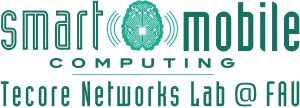High School ESP
FAU Summer High School ESP Program 2016
In 2016, we added a three-week long college-credit course for high school students. The course helps students gain theoretical and practical knowledge in vehicular communication networks. The students learn that vehicular communication will be in all cars in the very near future. Cars will be able to “talk” to each other and provide important services such as collision prevention, safety-related information, and even social networking and entertainment. This powerful, cutting-edge technology is currently being developed by the Smart Drive initiative at Florida Atlantic University under the NSF MRI grant and the students learn about and experience this technology. They participate in learning the concepts of vehicle-to-vehicle (V2V) communication, developing prototype vehicular communication through simulation tools, programming MSP430 microprocessors and XBee radio chips, as well as building prototype circuits using breadboards, chips, resistors, wires and LEDs. They use 3-D printers to design and create parts such as license plates, design Printed Circuit Boards (PCBs) for a flashing LED circuit police car display, and learn to how solder these circuits. The students demo their working VANET*-enabled prototype car that is able to send/receive radio signals, and move out of the path of the emergency vehicle. They modify the prototype cars with a creative enhancement to the microprocessor code or print a 3D part as the class project. Multiple hand-outs are provided where the students fill in their answers based on the subject material they learn. They also participate in discussion groups allowing creative student contribution. Manipulatives such as video presentations and illustrations are used to teach the theoretical concepts.
 |
 |
 |
 |
 |
 |
